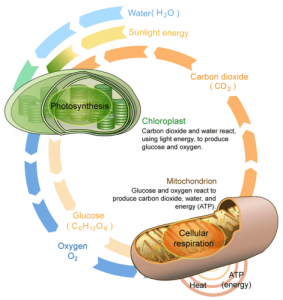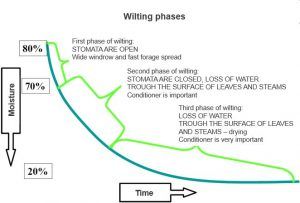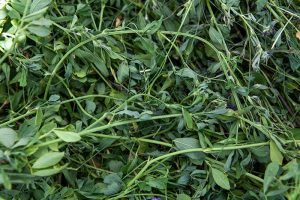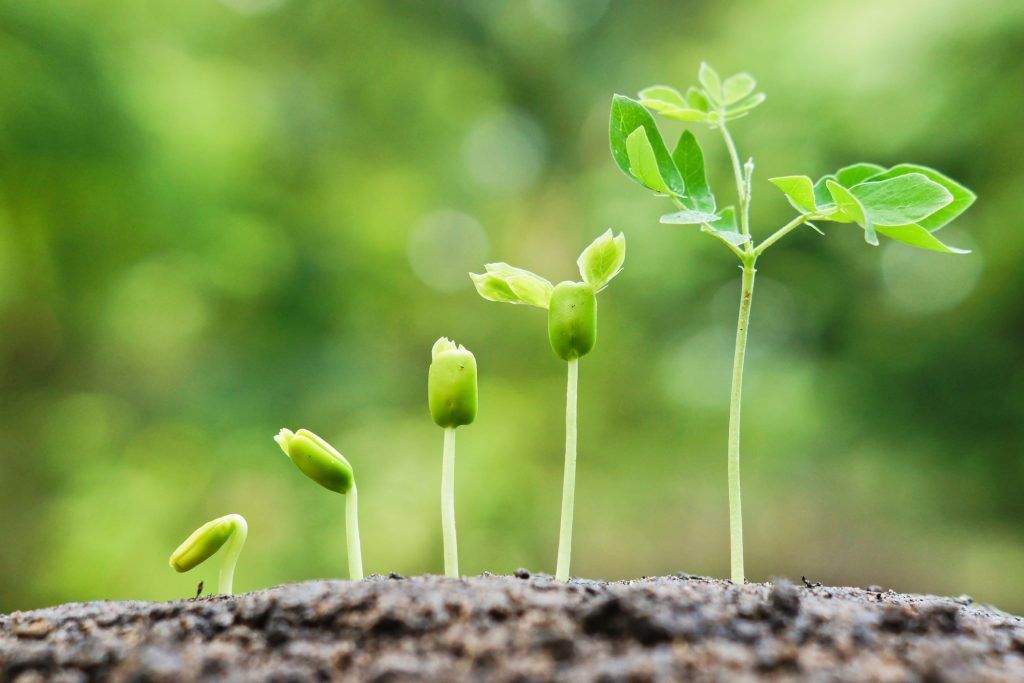Plants are autotrophic organisms, meaning that they can provide all the substances they need to survive from the environment. The two main, opposing, and at the same time, independent processes that take place in plants are photosynthesis and cellular respiration.
Photosynthesis is a process in which plants, algae, and some bacteria use solar energy, water (H2O), and carbon dioxide (CO2) to form oxygen (O2) and sugars, which are their source of energy.
During photosynthesis, plants receive carbon dioxide and water from the air through the stomata on the leaves. Inside the cell, water is transformed into oxygen and carbon dioxide into a simple sugar, i.e. glucose. Oxygen is released from the plant back into the atmosphere, and glucose is stored as a source of energy and converted into starch. In the cells, there are also small organelles called chloroplast with chlorophyll pigments in their membranes. These give the plants green color, absorb energy from waves of blue and red light and convert it to chemical energy. The chemical energy generated in the chloroplasts is then consumed in the enzymatic reaction of converting water and carbon dioxide molecules into glucose.

Process of photosynthesis and respiration (Photo Source: CK-12 Foundation)
Cellular respiration is a continuous aerobic process in the cells of all organisms. In the process of respiration, energy in the form of organic molecules formed during photosynthesis is consumed in the mitochondria. While photosynthesis takes place only in the leaves of plants and only in the bright part of the day, cellular respiration takes place in all parts of the plant. Respiration consumes glucose and oxygen and forms CO2 and H2O while releasing energy and cooling the plant by removing water. The process of respiration and breakdown of sugars also continues after mowing. As nutrients are consumed during respiration, the wilting process must be shortened as much as possible and the appropriate dry matter (DM) of the forage must be achieved as quickly as possible.
Understanding the wilting process is very important for the forage quality. It is divided into three phases. In the first phase, loss of moisture takes place through the stomata, as they are wide open in the bright part of the day. Immediately after mowing, the respiration of plants is most intense and gradually decreases until the humidity falls below 40%. If the loss of the first 15% of moisture from plants is achieved very quickly, the consumption of sugars and starch is reduced. At this stage, we need to expose as much of the plants’ area as possible to solar radiation. This keeps the stomata wide open and accelerates moisture loss. Therefore, making a wide row behind the mower and/or spreading the forage soon after mowing is crucial.

With fast wilting, we maintain the nutritional value and ensure a sufficient content of sugars that provide high energy value of forage and in addition in the ensiling process represent a source of energy for lactic acid bacteria, for quick and intensive lowering of the pH in the silo or bales (Photo Source: Undersander D., Harvesting impacts on forage quality).
In the second phase, the stomata begin to close and finally close and end respiration. Moisture loss can only occur by evaporation through the surface of the leaves and stems, surrounded by a waxy epidermis, which slows down the process. At this stage, the use of a conditioner is important, as it damages the epidermis or compresses the stems, and accelerates the water loss.
In the third phase, when the stomata are already closed and respiration stops, it is necessary to lose water from deep inside of the stems. For this phase of wilting, the use of a conditioner is most important, as it damages the stems and allows for a faster loss of moisture.

Alfalfa leaves (and also clover) have a higher surface-to-volume ratio compared to stems, which means that water loss through the leaves is very fast and they dry faster. Therefore, in alfalfa, it is very important to use a conditioner that compresses the stem and allows water to evaporate faster (Vir slike: hayandforage.com).
Keywords: sip, agriculture, agricultural machinery, agricultural machines, agricultural equipment, grassland harvesting, making hay, meadow, mowing, disc mowers, finger conditioner, roller conditioner, tedder, rake, pick-up rake…












